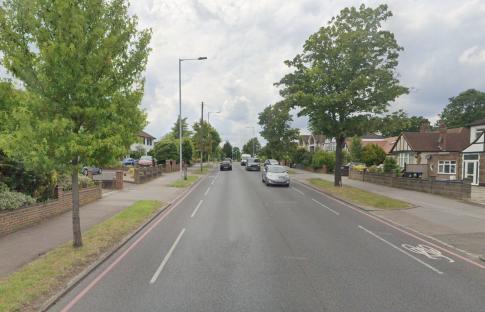With restaurants closed, travel restrictions in place and public events non-existent because of the pandemic, outdoor pursuits are on the rise among Okanagan residents.
The summer-like weather may have you considering heading out to hike or camp, but the fire danger rating issued by the B.C. Wildfire Service means taking more precautions around fire.
“Going into this weekend we are seeing unseasonably warm temperatures, so the B.C Wildfire Service is reminding people to please be extremely cautious,” Kamloops Fire Centre fire information officer Gagan Lidhran told Global News.
Most of the Okanagan, Similkameen, Shuswap, Thompson and Nicola are already rated by the government as being in moderate wildfire risk.
Read more: Province weighing its options for Eagle Pass Lookout after unauthorized rebuild
“Forest fuels are drying and there is an increased risk of surface fires starting,” the B.C. Wildfire Service says of the moderate rating. “Carry out any forest activities with caution.”
Several communities are already in the high wildfire danger area, according to the B.C. Wildfire Danger Map, including Salmon Arm, Merritt and the Clearwater area north of Kamloops.
The wildfire danger rating across B.C. on April 16.
Courtesy: BC Wildfire ServiceOn Saturday, the Penticton area wildfire risk is also forecast to be high, according to the weather model information used to calculate risk, meaning “forest fuels are very dry and the fire risk is serious.”
“New fires may start easily, burn vigorously, and challenge fire suppression efforts. Extreme caution must be used in any forest activities. Open burning and industrial activities may be restricted,” the B.C. Wildfire Service says.
Read more: Whipped by high winds, Lavington, B.C. slash fire moves towards homes
There have been 23 wildfires in the Kamloops Fire Centre from April 1 to 16, according to Lidhran.
There are eight fires active and in total, 1,037 hectares of land have been scorched, she said.
The Spahomin Creek Fire, located between Merritt and West Kelowna, north of Highway 97C, was discovered on Thursday and is approximately 500 hectares in size.
It is not said to be of threat to any community.
Current wildfires in the Kamloops Fire Centre, April 16.
Courtesy: BC Wildfire Service“This type of fire activity in the spring is not usual, because the fuels are still dead from over the winter and haven't had a chance to green up, combining with the increasing temperatures and windy conditions, this can cause fires to spread quickly,” Lidhran told Global News.
Extreme caution is advised in outdoor activities, she said.
Read more: Okanagan weather — 20-degree heat sticks around
“Mainly these early season fires have been driven by winds and dry conditions,” she said.
Currently, about half of the wildfires across B.C. are said to be human-caused, with the other half undetermined, according to the B.C. Wildfire Service.
But without any lightning observed in the region in the last month, human activity is expected to be the cause of all current wildfires, according to Lidhran.
“We are recommending people visit the B.C. Wildfire Service website for information on open burning and campfire protocols,” said Lidhran.
Anyone conducting an outdoor burn must adhere to the following provincial precautions:
- Ensure adequate resources are on hand to control the fire and stop it from spreading.
- Never burn in windy conditions. Weather conditions can change quickly, and the wind may carry embers to other combustible material and start new fires.
- Create an appropriately sized fireguard around the planned fire site by clearing away twigs, grass, leaves and other combustible material, right down to the mineral soil.
- Never leave a fire unattended.
- Make sure any fire is completely extinguished and the ashes are cold to the touch before leaving the area for any length of time.




